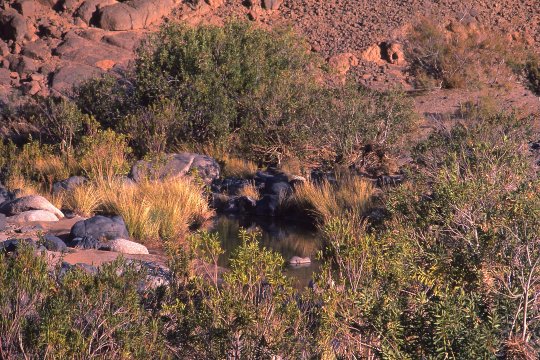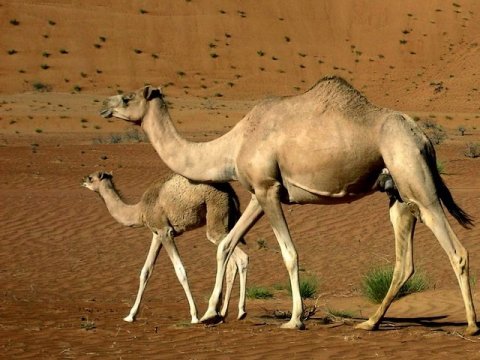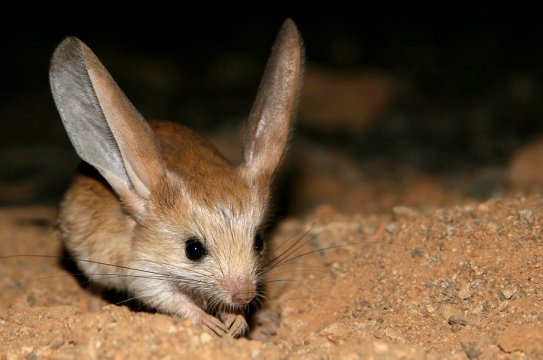|
John Tyman's Cultures in Context Series EGYPT and the SAHARA www.johntyman.com/sahara |
|
1.3 Plant and Animal Life : 049-063 |
| . |
|
John Tyman's Cultures in Context Series EGYPT and the SAHARA www.johntyman.com/sahara |
|
1.3 Plant and Animal Life : 049-063 |
| . |
 |
| .054. Trees and shrubs are rare, found only where their roots can reach ground water, as in wadis occupied briefly by intermittent streams following rain. (Floor of wadi in the Hoggar after rain) |
 |
| .062. The reproduction of animal species is also influenced by the climate. Most gazelles here calve about a month after the onset of the rains, when plenty of grazing is available. Camels have a pronounced rutting season at the time of the rains and a pregnancy lasting twelve months. (Young camel courtesy: Puzzles-Games.eu ) |
 |
| .063. The fertility of jerboas and voles declines during dry weather and their population levels drop off accordingly: also no rodents here sweat. And lizards run between patches of shade with their body held high to reduce the rate at which heat is absorbed from the surface: and when they reach the shade they flop down to allow their body to lose heat by contact with the cooler ground. (Long-eared jerboa courtesy: 25.media.tumblr.com ) |

![]()
Text and photos by John Tyman
unless otherwise indicated.
Intended for Educational Use
Only.
Contact Dr. John Tyman at johntyman2@gmail.com
for more information regarding
licensing.
![]()
www.hillmanweb.com
Photo processing, Web page layout,
formatting and hosting by
William
Hillman ~ Brandon, Manitoba ~ Canada